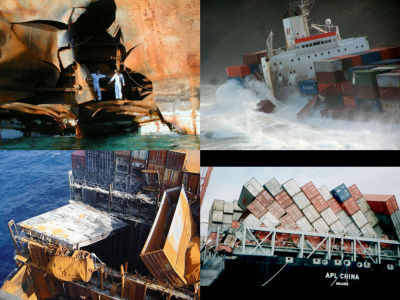95% of container ships avoid the Suez Canal and choose a route around the Cape of Good Hope as the Houthis continue to attack ships in Yemen's civil war.

Flexport, a logistics tech startup headquartered in California, USA, reports that ocean carriers around the world are avoiding routes via the Red Sea and choosing routes around the Cape of Good Hope in southern Africa. The reason is the civil war in Yemen.
Global Ocean Carriers Halt Red Sea Transits – What to Expect
CMA CGM, one of the world's leading shipping companies based in France, announced in December 2023 that the Houthis, a pro-Iran armed group in Yemen, have increased attacks on ships using drones and ballistic missiles. On the 16th, it announced a temporary suspension of all ships heading to the Suez Canal via the Red Sea and Bab el-Mandeb Strait due to 'heightened safety concerns and ensuring the safety of crew members'. According to Flexport, the Panama Canal, which connects the Pacific and Atlantic Oceans, has become difficult to transit due to drought, and many shipping companies have chosen to take the route through the Suez Canal to the Atlantic Ocean.

Additionally, on December 17, shipping companies including Mediterranean Shipping Company, Maersk, and Hapag-Lloyd announced that they would temporarily suspend ships heading to the Suez Canal. If you want to avoid the Suez Canal, you will need to take a route around the Cape of Good Hope in southern Africa in order to go from the Atlantic Ocean to the Pacific Ocean, but in that case, it will take 1.25 times longer than the route through the Suez Canal. About. Furthermore, the route around the Cape of Good Hope in southern Africa has much stronger winds than the Red Sea, which reduces fuel efficiency and increases fuel costs. Flexport predicted that sea freight rates would rise significantly and rapidly unless the situation was resolved.

In addition, when the Ever Given ran aground in the Suez Canal in 2021, transportation costs increased from $1,500 (about 216,000 yen) per container to $20,000 (about 216,000 yen) per container. 2.9 million yen).
Ever Given enters the Suez Canal with more cargo than at the time of the accident, Egyptian authorities declare a state of emergency - GIGAZINE

On December 26, 2023, the U.S. Department of Defense announced that several countries, including the United States, United Kingdom, Bahrain, Canada, Italy, the Netherlands, Norway, Spain, and the Seychelles, were conducting military operations in the southern Red Sea to counter attacks on ships by the Houthis. We have launched 'Operation Prosperity Guardian' to address security challenges. In response, Maersk, CMA CGM and COSCO have partially resumed operations in the Red Sea.
The Houthi attacks on Maersk ships on December 30 and 31, 2023 caused the number of ships passing through the Red Sea to plummet once again. Maersk has suspended its Red Sea route for 48 hours and announced that it will cease all sailings through the Red Sea from January 2, 2024. Then, on January 2, the Houthis launched two anti-ship missiles toward the southern Red Sea, prompting Hapag-Lloyd to continue avoiding passage through the Red Sea until at least January 9, redirecting the route around the Cape of Good Hope. announced that it would be changed.
According to Flexport, as of January 5, 2024, with the exception of CMA CGM, almost all of the shipping companies' vessels have chosen the route around the Cape of Good Hope in southern Africa, with a total of 5.4 million ships, or 22% of the world's operating capacity. It is said that 389 container ships equivalent to TEU are detouring through the Suez Canal. Compared to December 15, 2023, the Shanghai Container Freight Index (SCFI), which shows trends in container freight rates originating from Shanghai, is +179% for Northern Europe, +131% for the Mediterranean, +53% for the US West Coast, and +53% for the US East Coast. With an increase of 40%, it can be said that sea transportation costs have soared across the board in one month.

As of January 8, 2024, 515 ships have chosen the route around the Cape of Good Hope. Furthermore, insurance costs for transiting through the Red Sea have increased by 3.5 times compared to December 2023.
However, the route around the Cape of Good Hope is not at all safe, and attacks by pirates are possible even on the coast of Somalia on the east side of Africa. In fact, on January 6, 2024, there was a report that six suspicious small vessels were confirmed within 1 nautical mile (1852 m) of a commercial ship, so just because the Red Sea was bypassed does not necessarily mean that the risk can be reduced to zero. The situation is such that it cannot be said that there are any.
Related Posts:
in Ride, Posted by log1i_yk






